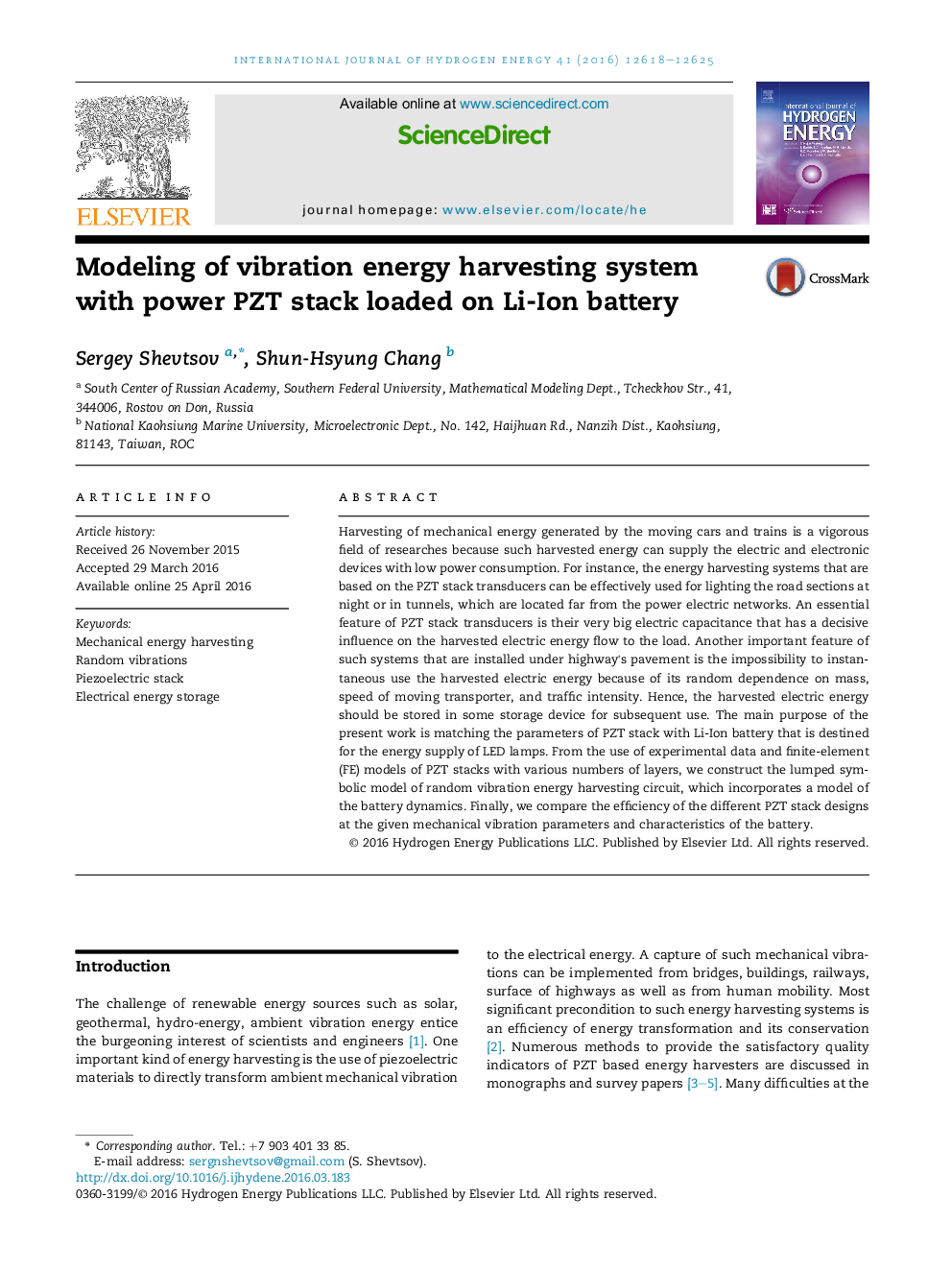| Article ID | Journal | Published Year | Pages | File Type |
|---|---|---|---|---|
| 1268380 | International Journal of Hydrogen Energy | 2016 | 8 Pages |
•Random mechanical vibrations energy harvesters on the basis of multilayered PZT stack.•Harvested electric energy is stored in the battery to supply the lighting at the night time.•A symbolic lumped model of harvesting system is implemented in Simscape MATLAB.•The harvesting system is optimized by varying a number of stack’s PZT layers.•The constraints are the vibration parameters, battery capacity and its nominal voltage.
Harvesting of mechanical energy generated by the moving cars and trains is a vigorous field of researches because such harvested energy can supply the electric and electronic devices with low power consumption. For instance, the energy harvesting systems that are based on the PZT stack transducers can be effectively used for lighting the road sections at night or in tunnels, which are located far from the power electric networks. An essential feature of PZT stack transducers is their very big electric capacitance that has a decisive influence on the harvested electric energy flow to the load. Another important feature of such systems that are installed under highway's pavement is the impossibility to instantaneous use the harvested electric energy because of its random dependence on mass, speed of moving transporter, and traffic intensity. Hence, the harvested electric energy should be stored in some storage device for subsequent use. The main purpose of the present work is matching the parameters of PZT stack with Li-Ion battery that is destined for the energy supply of LED lamps. From the use of experimental data and finite-element (FE) models of PZT stacks with various numbers of layers, we construct the lumped symbolic model of random vibration energy harvesting circuit, which incorporates a model of the battery dynamics. Finally, we compare the efficiency of the different PZT stack designs at the given mechanical vibration parameters and characteristics of the battery.
